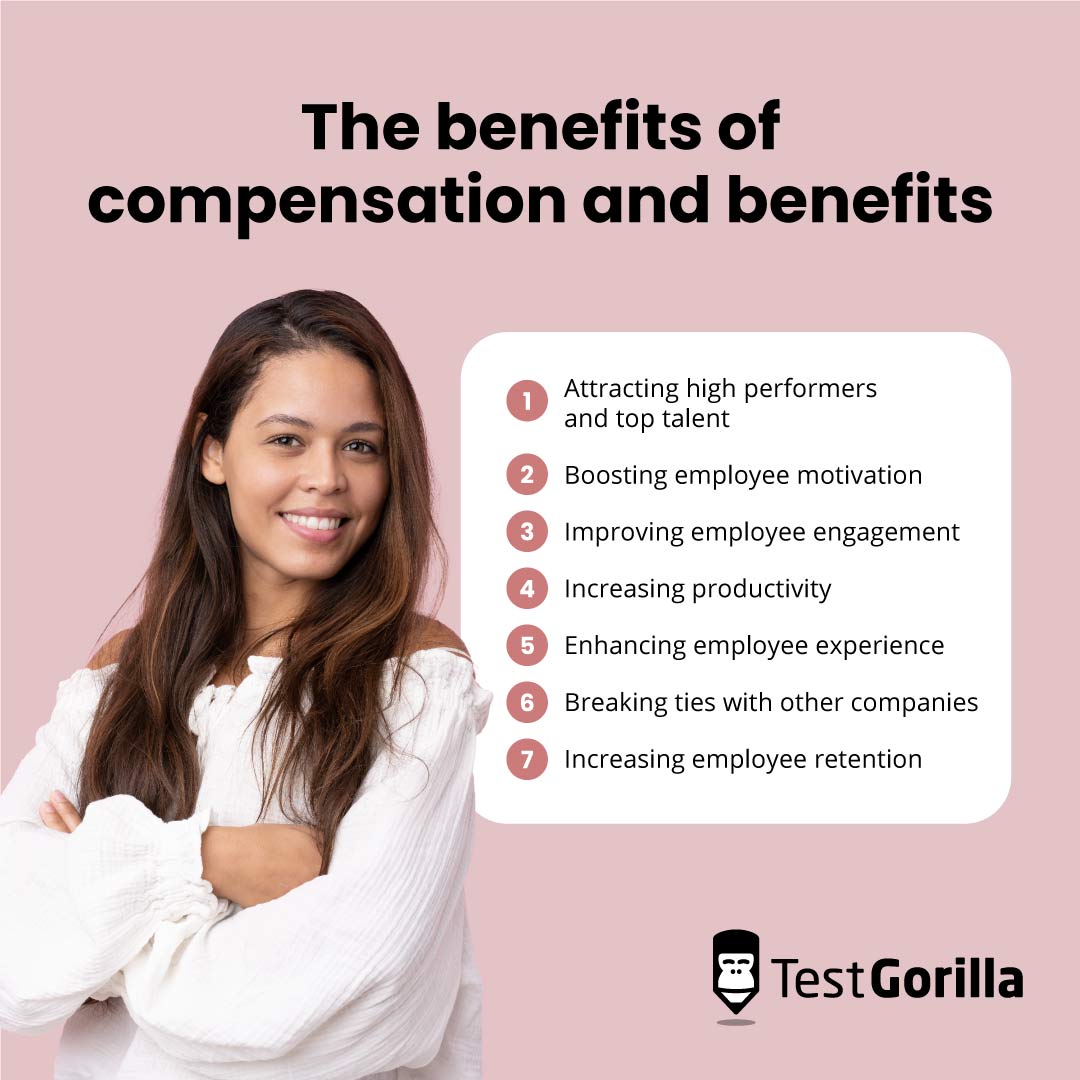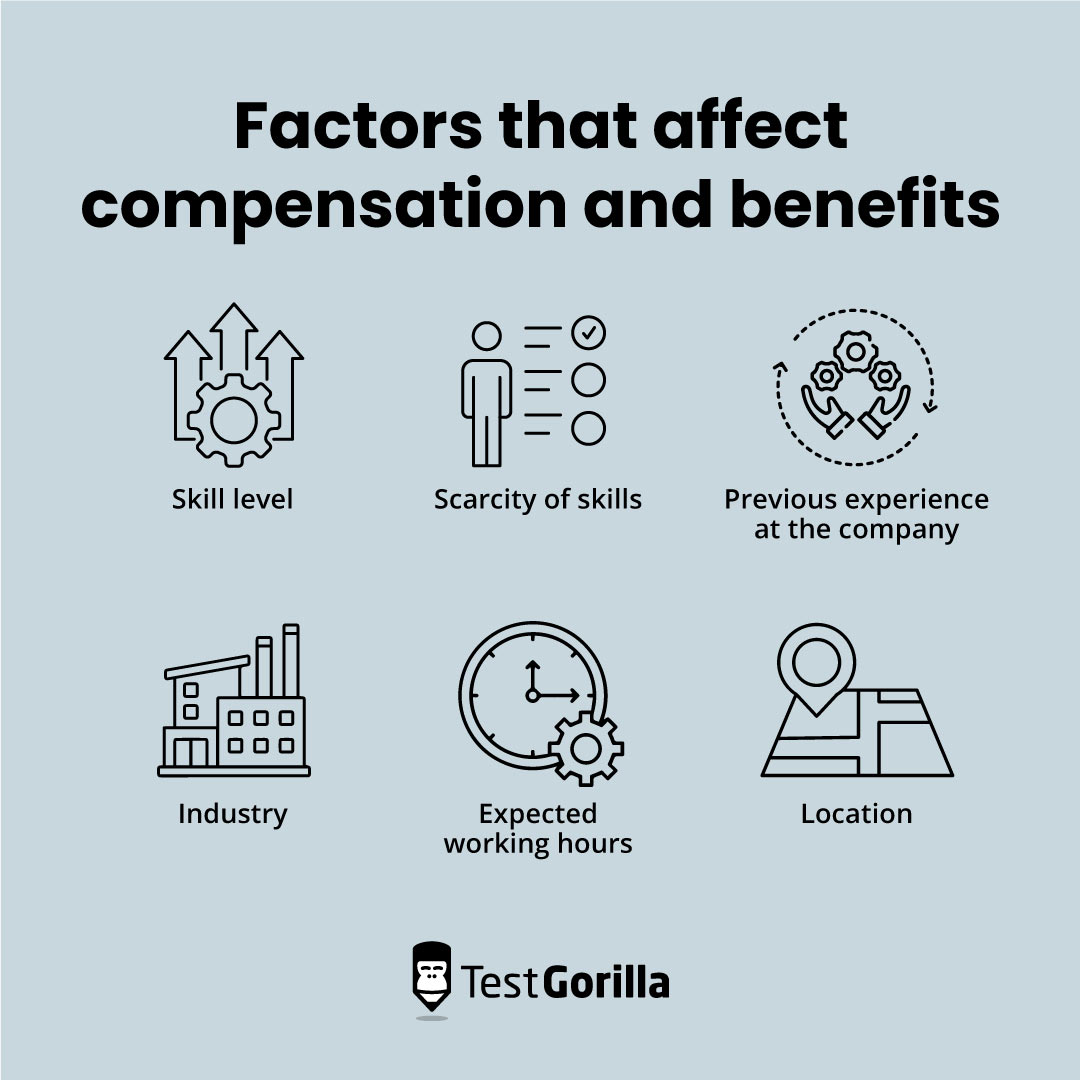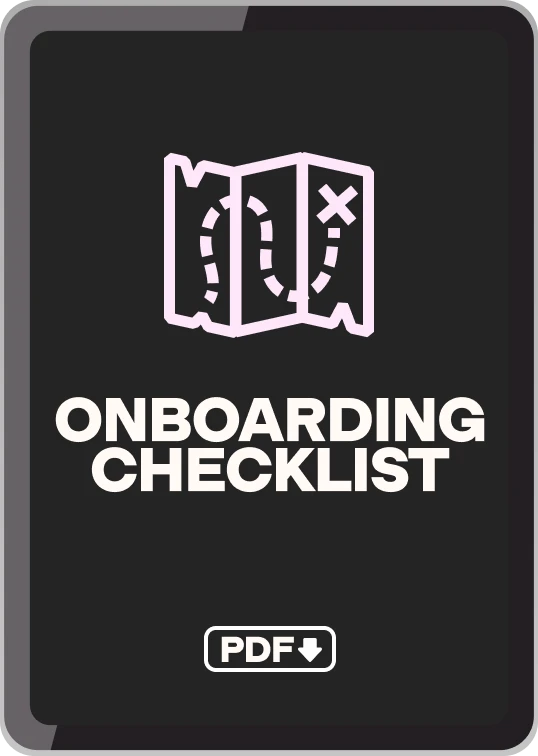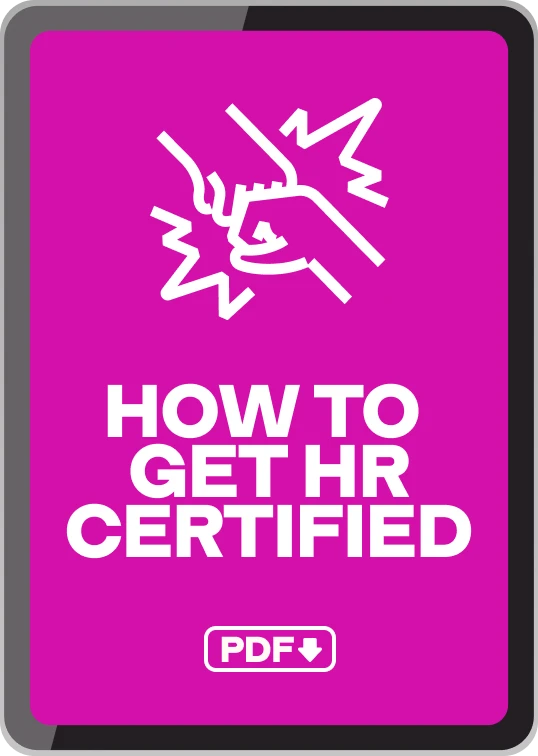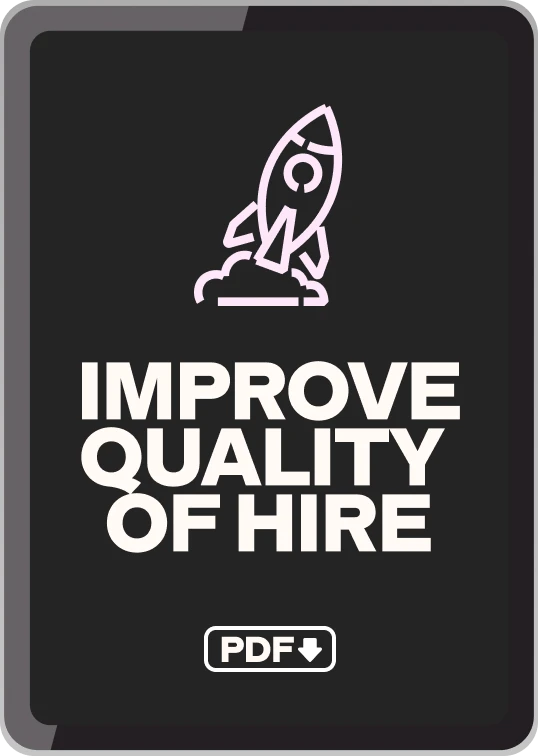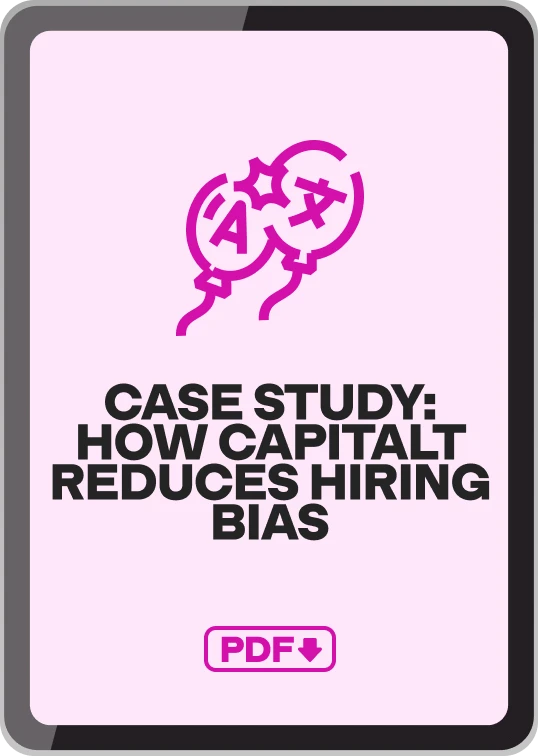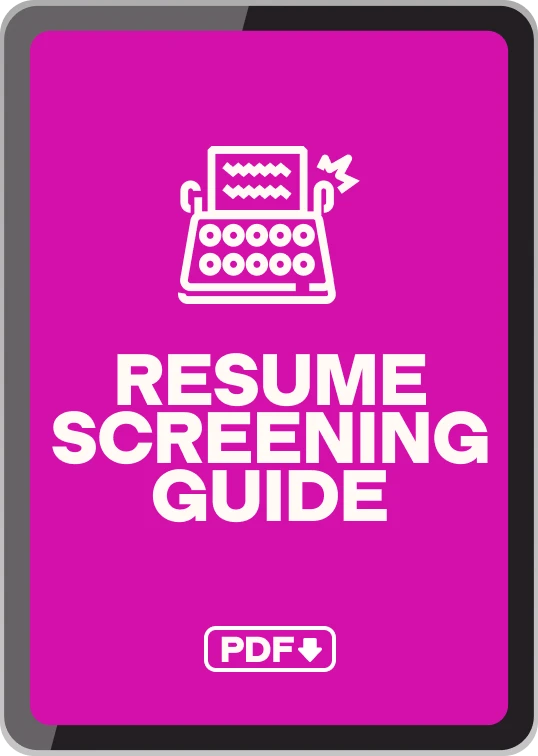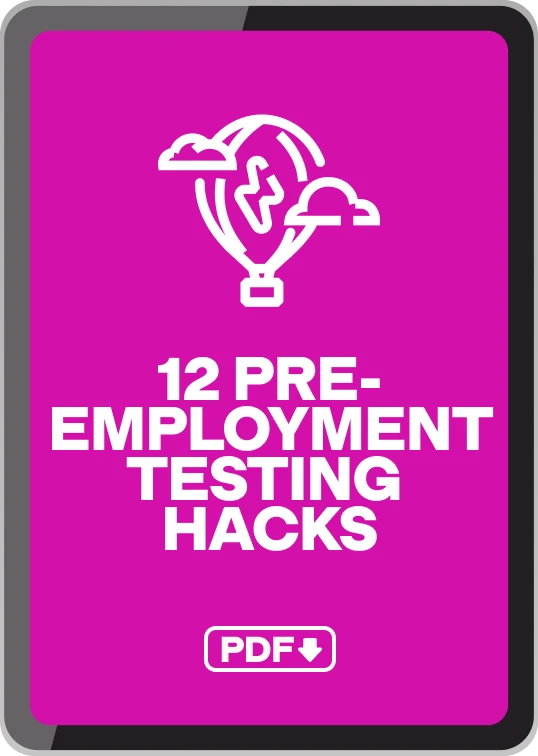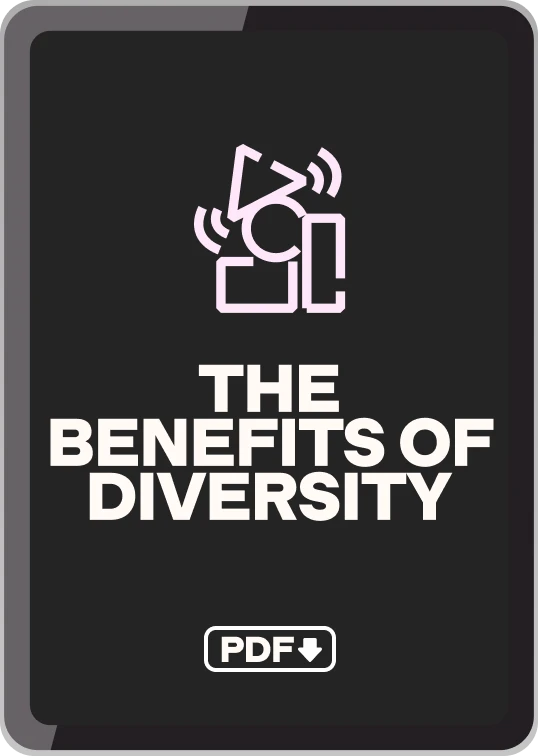Compensation and benefits: How to leverage this talent acquisition strategy to hire skilled employees
The Covid-19 pandemic and the Great Resignation caused long-term talent shortages, making it harder for organizations to attract and retain top talent.
With 80 percent of job seekers giving some or heavy consideration to better health, dental, and vision insurance benefits – and a mere 32 percent of employees feeling they’re being paid fairly – an attractive HR compensation and benefits package is a vital talent acquisition strategy. [1,2]
To attract top candidates and ensure your existing employees feel supported, it’s never been more important than now to offer comprehensive compensation and benefits packages.
In this article, we explore what benefits and compensation are, the differences between the two, and the 8 best practices to follow when designing your strategy.
Table of contents
- What are compensation and benefits?
- Why are employee compensation and benefits important?
- The benefits of compensation and benefits
- 8 best practices for leveraging benefits and compensation to acquire top talent
- 4 examples of companies succeeding with compensation and benefits as a talent acquisition strategy
- Incorporate competitive compensation and benefits into your talent acquisition strategy
- Sources
What are compensation and benefits?
Compensation and benefits are the total monetary and nonmonetary rewards given to employees in exchange for their labor.
They are a key responsibility of the HR department, which typically determines how much money employees earn and the specific nonfinancial benefits they’re given.
Enticing candidates with robust compensation and benefits increases employee motivation, hiring efficiency, and engagement while contributing to a positive workplace culture.
For a well-rounded candidate experience, combine this strategy with talent acquisition trends like focusing on employee wellness or offering flexibility in the workplace.
Compensation vs. benefits
There are many different types of compensation and benefits packages that organizations offer to high-performing job candidates.
Compensation is direct, financial payments made to an employee for their work at a company. These can be salaries, hourly wages, bonuses, commissions, or per-project payments.
Benefits are indirect, nonfinancial payments or rewards that businesses offer employees. They can have monetary value like health insurance plans, life insurance, transportation benefits, stock options, student loan repayments, childcare, or retirement benefits.
There are also benefits without monetary value, like family leave, paid time off, learning and development opportunities, and flexible working schedules.
4 key components of compensation and benefits
When combined, compensation and benefits have their own components.
1. Fixed pay
Fixed pay is the minimum monthly salary paid to employees, including basic pay and any additional benefits like housing, childcare, or transportation. Fixed pay excludes any additional direct payments like bonuses or overtime pay.
Employers establish fixed pay based on factors like minimum wage, the employee’s role, the cost of living, and customary industry pay rates.
2. Variable pay
Variable pay, or performance-linked pay, is direct financial compensation from an employer based on an employee’s individual performance and contribution to organizational growth and success.
3. Equity pay
Equity pay is an ownership stake in a company that is given to employees as a part of their compensation package. These are non-cash payments that typically kick in after an employee has spent a specified amount of time with the organization.
4. Medical and insurance
Medical compensation and benefits include health insurance, free checkups, access to onsite medical facilities, and healthcare reimbursements. Companies can also include non-medical insurance (like life insurance) in compensation and benefits packages.
5 common compensation models
It’s important to note that not every organization pays its employees in the same way.
Some organizations prefer to pay employees based on performance, others prefer to pay based on job titles, and some prefer to pay a combination of commission and base salary.
Five common types of compensation models are:
Commission-based pay: Employees are paid a commission for every sale they make. This incentivizes employees to close sales to increase their individual earnings.
Salary plus commission: This is the most popular model for sales roles. Employees receive a base salary and commission. The standard salary-to-commission ratio is 60:40.
Hourly pay: Employees are paid an hourly wage for the work they perform. This model is most popular in the hospitality, retail, and manufacturing industries.
Territory volume: These are sales compensation plans that organizations use to foster collaboration between team members. The total sales of a specific territory are divided equally among salespeople who performed well with others to positively impact sales in that territory.
Total rewards: This model looks beyond direct compensation as the sole source of job satisfaction and engagement. Instead, it offers a framework where all aspects of an employee’s work-life – including wages and bonuses, workplace flexibility, recognition, company culture, and career development opportunities – are fundamental in determining happiness, productivity, and low turnover levels.
Compensation and benefits package example
The importance of compensation and benefits programs is clear: Employees need to be paid for their work, and employers need to meet this obligation in an organized and fair way.
Each business may have a different way of compensating its employees, but the below example is a helpful guide to building your own compensation and benefits package.
Financial Compensation Example
Name: Maria Smith
Role: Computer Programmer
Salary: $90,000 per year
Hours: 40 hours per week
Performance bonus: Discretionary bonus of up to 20% of the employee’s base salary depending on the employee’s performance by the end of the fiscal year
Retirement planning: Traditional 401(k) with employer matching 100% of employee contributions up to 4% of salary after the first year of employment
Health insurance: Group insurance and the employer covers premium costs
Life insurance: The employer covers life insurance up to the employee’s salary amount
Vacations: Unlimited paid time off
Learning and development: $1,000 per year for professional development
Why are employee compensation and benefits important?
Offering competitive employee compensation and benefits is important for both employees and employers. Employers need to attract talent while reducing employee turnover by rewarding engaged and high-performing workers.
According to LinkedIn’s 2022 Global Talent Trends, 60% of workers listed compensation and benefits as one of their top priorities when choosing a job.[3]
With the persistence of global talent shortages, employers can’t afford to shrink their talent pools by offering subpar compensation and benefits packages.
Employees, on the other hand, need guarantees they will be paid what they’re worth so they can support themselves and their families.
If your total compensation and benefits package is subpar, you might lose quality candidates to companies with better offers.
The benefits of compensation and benefits
Offering competitive compensation and benefits packages serves companies and HR professionals by:
Attracting high performers and top talent
Boosting employee motivation
Improving employee engagement
Increasing productivity
Enhancing employee experience
Breaking ties with other companies
Increasing employee retention
Attracting high performers and top talent
To fill vacancies with skilled talent, companies need to create compensation and benefits packages desirable enough to attract high performers and high potentials (HiPos).
Boosting employee motivation
Offering employees fair compensation and benefits plans motivates them to hold onto the financial security that they earn.
In fact, nearly half of employees say salary or bonus is their biggest motivator to stay at a company. But it also shows them their employers value their hard work and dedication.
Improving employee engagement
Employee engagement improves when employees are invested in organizational goals. Benefits like stock options, workplace flexibility, and child care show your employees they are more than just employees – they’re partners helping your business succeed.
Increasing productivity
Offering competitive compensation and benefits has proven to improve individual worker productivity overall.
However, it’s important to note that wage hikes alone are not enough to guarantee increased productivity. Employees have other expectations, like learning and development opportunities, that contribute to their overall productivity.
Enhancing employee experience
If your organization offers benefits that improve the lives of your employees, like health insurance or in-office perks, your employees will be less stressed, enjoy their interactions with your company, and have a more positive employee experience.
Breaking ties with other companies
Benefits can often be a tie-breaker for quality candidates trying to choose between companies that offer similar compensation. In fact, more than half of employees say that benefits are very or moderately important when evaluating a job.[5]
Increasing employee retention
If employees appreciate their compensation and benefits packages, they’ll stay at their company longer. In fact, organizations that offer competitive compensation and benefits packages experience 53% lower voluntary turnover.[4]
8 best practices for leveraging benefits and compensation to acquire top talent
It’s important to consider best practices before advertising your compensation and benefits packages.
Unimpressive compensation and benefits offerings can turn off potential employees, damage your brand, and cause low employee morale.
So how do you guarantee your benefits and compensation attract quality candidates?
Leveraging compensation and benefits at a glance
Best practice | How it works |
Consider the factors that go into calculating compensation and benefits | Evaluate skill level, experience, current compensation and benefits, expected working hours, and location to calculate packages |
Offer skills-based compensation | Reward employees for skills instead of past job titles or education background |
Provide learning and development | Upskilling opportunities attract quality talent and increase productivity |
Benchmark your position | Research the benefits and compensation of your competitors to identify areas you can improve |
Offer nontraditional benefits | Remote work opportunities, unlimited PTO, and mental health benefits are all nontraditional ways to attract and support talent |
Clearly communicate compensation and benefits | Don’t just offer competitive packages – make sure your employees understand the value you’re offering them |
Develop fair compensation philosophy | Understand your relationship to compensation and make sure you’re motivated by fairness |
Consider low-cost benefits | Low-cost benefits like event tickets and mental wellness reimbursement can go along way when attracting top talent |
1. Consider the factors that go into calculating compensation and benefits
Calculating compensation and benefits is not a uniform process across organizations and industries.
But it’s important to calculate competitive compensation and benefits using relevant factors.
Here’s how these factors affect compensation and benefits:
Skill level: Employees with more relevant skills expect to be paid more
Scarcity of skills: Offer higher pay to employees with in-demand skills
Previous experience at the company: Workers with previous years of experience at your company may deserve higher compensation for their loyalty
Industry: Average pay rates vary between industries, so you need to compete with other companies in your specific industry
Expected working hours: If you expect your employees to work long hours, your compensation and benefits should reflect that
Location: Places with a higher cost of living need to offer a better compensation package
It’s also important to make sure your compensation and benefits offer reflects the needs of the employee. For example, remote employees aren’t going to be enticed by a dog-friendly office or team outings.
If you consider these factors when calculating your compensation and benefits package, you can increase your chances of hiring top talent.
2. Offer skills-based compensation
Skills-based compensation rewards employees based on their skill sets and competencies rather than their previous job title, education history, or work experience.
Why? Because none of those factors have anything to do with an employee’s ability to succeed in their role – skills do.
Skills-based compensation has several benefits:
It gives you a competitive edge. Paying employees based on their skills incentivizes them to improve and expand their skill sets. When more team members gain new, in-demand skills, it contributes to building agile and cross-functional teams that increase your competitive edge.
It makes you more attractive to talent. Candidates are attracted to opportunities to show their skills and want to work for companies that invest in their growth. In fact, 87% of Millennials say that professional development and career growth are important to them.[6]
It fills roles with the right skill sets. Experience-based compensation does not guarantee a person has the right skills to do the job, and even when they demonstrate they don’t have the skills they said they did, employers can be stuck paying for it. Using skills assessments to determine pay ensures the employee’s skills and compensation match.
It increases employee engagement. Paying employees for their specific skills and valuing their expertise increases engagement and encourages workers to keep their skills up to date.
3. Provide learning and development opportunities
As we mentioned earlier, job candidates are hungry for learning and development opportunities. Including them in your benefits package is a great way to attract talent, boost passive recruiting efforts, and make your business more profitable.
Although investing in employee development strategies like training programs, online courses, and leadership development plans may seem costly, businesses benefit greatly from them.
In fact, companies focused on upskilling and development have reported a 14%-29% increase in profits.[7]
According to Eloise Goldman, vice president of public relations at Cambria, English language learning is a huge perk that attracts diverse talent.
In fact, Cambria established an English language learning program in 2015. Since 300 of their 650 employees are foreign-born, Goldman said the program was pivotal in attracting and retaining diverse, high-quality talent.[8]
With 48% of American workers saying they would switch jobs for more skills training opportunities, organizations like Cambria are in a great position to attract candidates outside of traditional direct compensation strategies like salaries and bonuses.
4. Benchmark your position
Offering competitive compensation and benefits means having an in-depth understanding of what your peers, competitors, or outside industries are offering.
Identify your strengths and weaknesses, opportunities for growth, threats to your talent retention and talent pool management, or gaps in your processes and compare them to the field.
If your salary, benefits, or employee performance data is unorganized or difficult to locate, consider upgrading your HR tech stack or switching to an all-in-one system.
These systems are also helpful tools to manage your hiring needs, like applicant tracking and managing candidate data.
When you have the full picture of your company’s current performance, compare it to what your peers and competitors offer – and then find ways to improve your ranking with data driven recruiting.
5. Offer nontraditional benefits
It's important to deliver what job candidates want and what employees need.
Nontraditional benefits are becoming increasingly popular, especially when hiring younger workers like millennials and Gen Zers:
Remote and hybrid work offerings. According to a Slack survey of 9,000 knowledge workers, 72% prefer a hybrid work model because it improves their work-life balance, reduces stress and anxiety levels, and improves productivity and overall satisfaction.
Mental health and employee wellness benefits. The next generation of workers wants employers to offer mental and emotional health benefits. These benefits are becoming non-negotiable when hiring Gen Z. In fact, an overwhelming 92% agree that companies should feature these benefits in their job offers, with more than a third prioritizing those companies during their job search.[9]
Financial planning and advice. A study from Morgan Stanley found 56% of employees view retirement planning assistance from financial professionals as a high priority when choosing a job. For a quarter of respondents, financial advice was the top benefit they wanted from their employers.[10]
6. Clearly communicate compensation and benefits packages
Offering competitive, fair compensation and benefits is crucial to attracting, retaining, and engaging high-performing talent.
Research from Payscale shows employees were more engaged at work if they perceived their pay to be fair.[11]
In other words, when employees understand the ins and outs of their benefits and compensation, they are more engaged at work.
That’s why healthy workplace communication about compensation and benefits is so important.
Be transparent about your salary and benefits information, including the processes that go into determining the final packages.
Set the stage for transparency early by listing compensation and benefits in your job descriptions. For compensation, make sure to list salary ranges, bonuses, and commission details (if applicable).
In the benefits section, list vacation time policy, incentives, rewards, insurance, and learning and development opportunities.
The more detail, the better, and always keep communication channels open at the start of your hiring process and throughout your employee’s tenure.
7. Develop a fair compensation philosophy
A compensation philosophy is the foundation of how organizations reward employees. This philosophy is a crucial part of organizational culture and answers questions like:
Will high-performers be given financial rewards?
Will there be pay transparency?
Will we prevent gender and racial wealth gaps?
It’s important for your compensation philosophy to be based on fairness by:
Minimizing bias in hiring and in the workplace
Respecting the value of each individual’s contribution to growth
Giving each employee the opportunity to climb the salary ladder
Ensuring management and leadership can consistently follow company philosophy
Being adaptable to internal and external changes
It’s also important to revisit your remuneration philosophy regularly to determine whether your organization is living up to it, or if it needs to be replaced with a fairer one.
8. Consider low-cost benefits
If you are struggling to afford the compensation and benefits strategies offered earlier, consider low-cost benefits to attract and reward high-performing talent.
For example, tickets to movies, sporting events, and the theater are all affordable ways to give your employees free access to fun experiences. Although these don’t have an outsized impact on employee performance and retention, they boost morale and show your employees you want to reward them.
Adding to health benefits is a great idea – flexible spending accounts (FSAs), dental insurance, and vision insurance don’t break your organizational bank and offer employees an essential safety net. According to Joshua Carty, a senior HR generalist at Paychex, an FSA is a thoughtful tax-free advantage for employees to make healthcare more affordable.[12]
Wellness reimbursement – also known as a wellness stipend – is another affordable way to cover activities and expenses that aren’t necessarily medical but are related to employee wellbeing or mental health. This can cover fitness equipment, babysitting expenses, and nutritionist services, for example.
For example, nearly 20% of employers provide a discount on health insurance premiums to people who do not use tobacco products and offer 10% discounts to those who participate in programs to quit smoking.[13]
4 examples of companies succeeding with compensation and benefits as a talent acquisition strategy
A strong compensation and benefits strategy is an important part of a successful talent acquisition strategy.
Companies like Google, Course Hero, Patagonia, and HubSpot offer impressive compensation and benefits packages to attract high-performing talent.
Let’s take a look at some of the specific ways these four companies are leading the charge.
Companies succeeding with compensation and benefits
Successful companies | Compensation and benefits |
Some of the world’s best health benefits, including onsite wellness centers and mental health app subscriptions | |
Course Hero | Generous benefits like legal assistance and paid parental leave |
Patagonia | Impressive child care benefits, including a child development center |
HubSpot | Substantial health and wellness benefits like mindfulness classes and nutritionist consultations |
1. Google
Google’s health benefits are arguably some of the best in the world. Google offers employees:
Onsite wellness centers
Mental health app subscriptions
Medical advocacy for transgender workers
On top of their competitive salaries, their financial benefits are similarly attractive:
Annual pay equity evaluations and adjustments
Student loan repayment
One-on-one financial coaching
Google has also listened to the chorus of workers asking for flexibility and time off benefits, and it now offers hybrid work models and job sharing opportunities.
This talent acquisition strategy has had impressive results. Alphabet, Google’s parent company, increased its number of employees by 21.6% between 2021 and 2022.[14]
2. Course Hero
Course Hero is an education technology company with benefits and compensation ranked in the top 5% of Comparably’s 674 similar-sized companies.[15]
Its office perks include free food, company outings, legal assistance, and work-from-home options.
In terms of health and wellness benefits, Course Hero offers:
Dental insurance
Vision insurance
Health insurance
Life insurance
Gym membership reimbursement
It also has financial benefits:
Tuition reimbursement
401(k)/retirement plan
Job performance bonuses
Paid time off
Paid holidays
Paid parental leave
Course Hero puts people first to attract and retain talent, implementing a robust compensation and benefits package in its talent acquisition strategy.
3. Patagonia
Patagonia’s child care benefits began in 1983 when Malinda Chouinard put a trailer in front of their building so her friend and colleague Jennifer Ridgeway, now the head of marketing and advertising, had a place to care for her newborn during the day.
Fast forward to today, and the Great Pacific Child Development Center based at Patagonia’s headquarters in Ventura, California, boasts a climbing wall, playground, garden, and space for 100 children – all because of the company’s belief that child care is a moral imperative.
Some of the company’s other benefits include:
Health insurance
Dental insurance
Vision insurance
Health Savings Account
Flexible Spending Account
Mental health care
Job candidates are paying attention to these benefits.
According to Rose Marcario, chief executive officer of Patagonia, the company receives 9,000 applications for every open internship position, with a similarly huge demand for full-time openings.[16]
4. HubSpot
HubSpot is a customer relationship management platform that was voted the second-best place to work in 2022 by Glassdoor Employees’ Choice Award.[17]
Yamini Rangan, the chief executive officer, says people are its best perk. Adaptability and scaling their culture in a hybrid world are also crucial for the company’s success.
HubSpot offers health benefits such as:
Mental health resources
Healthy snack options
Fitness reimbursement
Nutrition consultations
Wellness and mindfulness classes
It also has a generous time-off policy with:
Unlimited vacation
Company-wide week off in July
Four-week paid sabbatical with a $5,000 bonus after five years of service
HubSpot offers a hybrid work model with three options (remote, office, flex) and financial support for at-home office equipment.
One of the promising results of this generous compensation and benefits strategy was a 26.1% increase in talent between 2021 and 2022.[18]
Incorporate competitive compensation and benefits into your talent acquisition strategy
Compensation and benefits aren’t just a box to check.
It's a vital part of your talent acquisition strategy to attract, retain, and engage high-quality talent for the long term.
This HR process determines the collection of financial and nonfinancial compensation and rewards that employees receive in exchange for their service.
Offering competitive compensation and benefits to prospective employees boosts productivity, profitability, retention, and employee engagement.
When designing your compensation and benefits strategy, it’s important to keep in mind best practices like providing learning and development opportunities, offering nontraditional benefits, and developing a fair compensation philosophy.
Otherwise, employees might go with a competitor that can prove they’ve put the time and money into winning them over.
Do you want to ensure your HR managers are up for the challenge?
Explore our HR Management test to evaluate your employees’ HR knowledge and people management abilities.
Sources
Tyler, Kathryn. (January 8, 2022). “What Employees Want”. SHRM. Retrieved July 26, 2023. https://www.shrm.org/hr-today/news/all-things-work/pages/what-employees-want.aspx
Cohen, Mikaela. (December 14, 2022). “A vast majority of workers aren’t happy with what they’re being paid”. CNBC. Retrieved July 26, 2023. https://www.cnbc.com/2022/12/14/a-vast-majority-of-workers-arent-happy-with-what-theyre-being-paid.html
Lobosco, Mark. (January 18, 2022). “The Reinvention of Company Culture: Why It Should Be Your Top Priority This Year”. LinkedIn. Retrieved July 26, 2023. https://www.linkedin.com/business/talent/blog/talent-strategy/global-talent-trends-report?trk=MarkLinkedInPost-global-talent-trends-2022
“2018 Workplace Learning Report”. (2018) LinkedIn Learning. Retrieved August 2, 2023. https://learning.linkedin.com/resources/workplace-learning-report-2018
Sherrer, Kara. (February 15, 2023). “Employee Retention Strategies & Benefits (2023)”. Technology Advice. Retrieved July 26, 2023. https://technologyadvice.com/blog/human-resources/retaining-staff/
Adkins, Amy; Rigoni, Brandon. (June 30, 2016). “Millennials Want Jobs to Be Development Opportunities”. Gallup. Retrieved August 2, 2023. https://www.gallup.com/workplace/236438/millennials-jobs-development-opportunities.aspx
Vinikas, Immanuel. (July 20, 2023). “5 reasons why learning and development is so important for organizations in 2023”. Kaltura Blog. Retrieved July 26, 2023. https://corp.kaltura.com/blog/learning-and-development-importance
Gallo, Sarah. (January 24, 2022). “Attract and Retain Talent With English Language Learning”. Training Industry. Retrieved August 3, 2023. https://trainingindustry.com/articles/workforce-development/attract-and-retain-talent-with-english-language-learning/
“Ready and Resilient: Class of 2023 Feels Stressed but Prepared to Enter the Workforce”. (April 19, 2023). TimelyCare. Retrieved August 6, 2023. https://timelycare.com/ready-and-resilient-class-of-2023-feels-stressed-but-prepared-to-enter-the-workforce/
“State of the Workplace III”. (2023). Morgan Stanely: At Work. Retrieved July 26, 2023. https://www.morganstanley.com/content/dam/msdotcom/atwork/state-of-workplace-financial-benefits-study-2023/state-of-workplace-study.pdf
“New PayScale Study Reveals Employees’ Perceptions About Pay Fairness and Transparency are Five Times More Impactful on Engagement Than Actual Compensation”. (November 7, 2017). Payscale. Retrieved August 6, 2023. https://www.payscale.com/press-releases/new-payscale-study-reveals-employees-perceptions-pay-fairness-transparency-five-times-impactful-engagement-actual-compensation/
“20 Low-Cost Benefits for Your Employees”. (July 16, 2018). PayChex. Retrieved July 26, 2023. https://www.paychex.com/articles/employee-benefits/twenty-low-cost-benefits-for-employees
Sammer, Joanne. (October 29, 2018). “Employer Incentives Encourage Employees to Quit Smoking”. SHRM. Retrieved July 26, 2023. https://www.shrm.org/hr-today/news/hr-magazine/1118/pages/employer-incentives-encourage-employees-to-quit-smoking.aspx
“Alphabet: Number of Employees 2010-2023 | GOOG”. (2023). Macrotrends. Retrieved August 3, 2023. https://www.macrotrends.net/stocks/charts/GOOG/alphabet/number-of-employees
“Course Hero Benefits”. Comparably. Retrieved July 26, 2023. https://www.comparably.com/companies/course-hero/perks-and-benefits
Debevoise, Nell Derick. (February 25, 2020). “Why Patagonia Gets 9,000 Applications For An Opportunity To Join their Team”. Forbes. Retrieved August 3, 2023. https://www.forbes.com/sites/nelldebevoise/2020/02/25/why-patagonia-gets-9000-applications-for-every-open-role/
Fleishman, Hannah. (2022). “HubSpot Voted the #2 Best Place to Work in 2022 by the Glassdoor Employees' Choice Award”. HubSpot. Retrieved July 26, 2023. https://www.hubspot.com/company-news/glassdoor-2022-best-places-to-work
“HubSpot Employees”. (2023). Stock Analysis. Retrieved August 3, 2023. https://stockanalysis.com/stocks/hubs/employees/
Related posts
You've scrolled this far
Why not try TestGorilla for free, and see what happens when you put skills first.
Latest posts
The best advice on pre-employment testing, in your inbox.
No spam. Unsubscribe at any time.

Hire the best. No bias. No stress.
Our screening tests identify the best candidates and make your hiring decisions faster, easier, and bias-free.
Free resources
This checklist covers key features you should look for when choosing a skills testing platform
This resource will help you develop an onboarding checklist for new hires.
How to assess your candidates' attention to detail.
Learn how to get human resources certified through HRCI or SHRM.
Learn how you can improve the level of talent at your company.
Learn how CapitalT reduced hiring bias with online skills assessments.
Learn how to make the resume process more efficient and more effective.
Improve your hiring strategy with these 7 critical recruitment metrics.
Learn how Sukhi decreased time spent reviewing resumes by 83%!
Hire more efficiently with these hacks that 99% of recruiters aren't using.
Make a business case for diversity and inclusion initiatives with this data.

